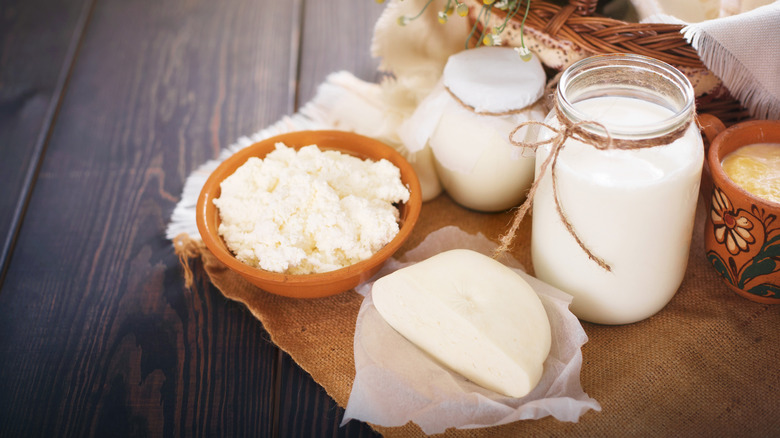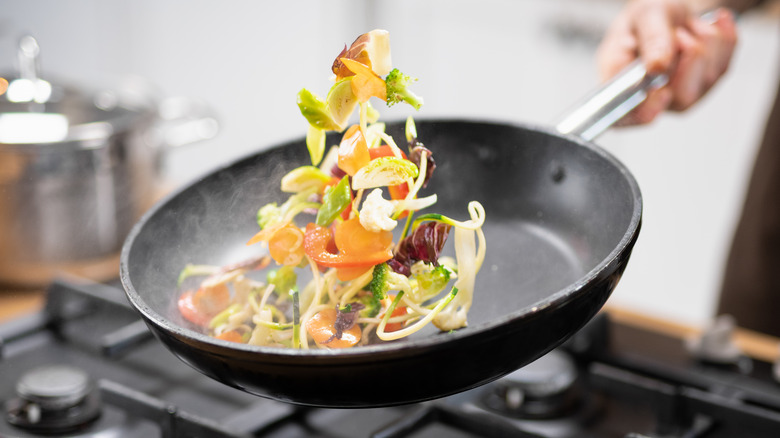How Goat Butter Tastes Different From Regular Cow's Butter
We've all heard of goat cheese and goat milk, right? So it's only logical that there would be a butter product to go along with them. Yet, when we think of butter, nearly all of us think about that which is derived from cow's milk. But goat butter should be on your radar. Not only does it do wonders for baked goods, but its flavor is something altogether different from what we are familiar with.
Cow's butter is split into multiple different categories. The differences are between the amounts of butter fat and beta carotene, and whether or not the cow was raised on grass. However, while some cow's butter will have deeper flavors and more yellow color than others, most maintain that neutral, partial sweetness, unless it is salted.
Goat butter, on the other hand, has a very nutty and grassy flavor. It also maintains that characteristic goat milk tang, though not nearly as strongly as goat cheese. And though the fat content is very similar to that of cow's butter, the fatty acid structure within the goat's milk more efficiently processes beta carotene, transforming it into vitamin A and turning the butter completely white as a result. So, you would easily be able to tell the goat and cow's apart if you were presented with each spread on a piece of toast based on their color and flavor. But what about cooking with goat butter? Are the flavor differences present then?
Cooking with goat butter
It honestly depends on what exactly you are planning on cooking. If you are, say, sautéing up some carrots or other vegetables, the subtle flavor differences will be lost. This is likely due to the butterfats, which contain the flavor, breaking down during the cooking process. However, if you're cooking eggs, where the fat is being more absorbed, you might be able to notice the tang of the goat butter the way you might notice the richness of regular cow butter.
One of the things you will likely also note about goat butter is just how spreadable it is at room temperature. This is because it has a far lower melting point than standard cow's butter. This does not mean that it will lose its shape or texture. What it does mean is that it will melt and spread quicker than standard cow's butter.
Another thing goat butter has going for it is that it pairs well with a number of different flavors. As its tang and grassy flavors are far more subtle than other goat milk products, you can pair it in baking with warm flavors like cinnamon and hazelnuts, or with more savory cheese, garlic, and assorted herbs. All said, if you can track down some goat butter, either at the supermarket or online, you're in for something very unique.

